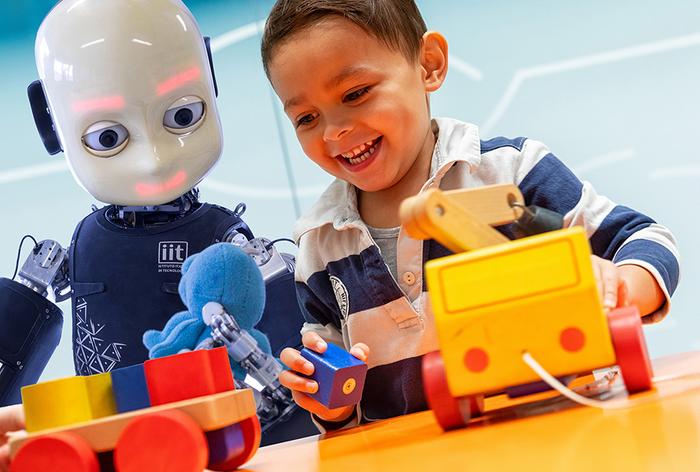Toddlers Crush ChatGPT: The Secret Behind Children’s Lightning-Fast Language Learning – ScienceBlog.com

New! Sign up for our email newsletter on Substack.
If your two-year-old learned language at the same pace as ChatGPT, they’d need 92,000 years to reach fluency.
Despite artificial intelligence’s ability to process vast amounts of data at breakneck speed, human children consistently outperform even the most sophisticated language models when it comes to acquiring natural communication skills.
New research published in Trends in Cognitive Sciences reveals why children maintain this remarkable advantage over machines. The study, led by Professor Caroline Rowland of the Max Planck Institute for Psycholinguistics, presents a comprehensive framework explaining how young minds master language with such extraordinary efficiency.
The key difference isn’t about information quantity—it’s about learning quality. While AI systems passively absorb written text, children engage in what researchers call “constructivist learning,” actively building language skills through dynamic interactions with their environment.
“AI systems process data … but children really live it,” Rowland explains. “Their learning is embodied, interactive, and deeply embedded in social and sensory contexts.”
Children deploy all five senses simultaneously, creating rich networks of coordinated signals that help decode language patterns. They crawl toward interesting objects, point at things that capture their attention, and manipulate items with their hands and mouths—behaviors that generate countless learning opportunities unavailable to text-trained algorithms.
The research team identified four critical components that give children their learning edge:
Current language models face fundamental limitations that children naturally overcome. Large language models require exposure to billions of words—magnitudes more input than any child receives—to achieve adult-level syntactic performance. When researchers limit AI systems to child-sized language exposure, their performance on complex grammatical structures plummets dramatically.
The research also highlights how children benefit from what scientists call “prediction-based learning.” Eighteen-month-olds already predict that nouns will follow determiners and verbs will follow pronouns. Two-year-olds use action meanings to anticipate upcoming sentence themes. This predictive capacity, combined with error-correction mechanisms, allows rapid language refinement.
These findings extend far beyond child development research. The insights could revolutionize artificial intelligence design, improve understanding of adult language processing, and shed light on human language evolution.
“AI researchers could learn a lot from babies,” says Rowland. “If we want machines to learn language as well as humans, perhaps we need to rethink how we design them—from the ground up.”
The research team’s framework synthesizes evidence from computational science, linguistics, neuroscience, and psychology. Their work comes at a time when technological advances—including head-mounted eye-tracking and AI-powered speech recognition—allow unprecedented observation of child-caregiver interactions.
Perhaps most significantly, the study challenges the traditional view of language acquisition as purely cognitive. Instead, it reveals language learning as an embodied process where physical exploration, social interaction, and sensory experience work together seamlessly.
Children learning words don’t just memorize sound-meaning pairs. They use behavioral cues like eye gaze and gesture to narrow down word meanings. Deaf and hearing one-year-olds alike use speaker intention signals to identify novel noun referents. Two-year-olds combine English word order knowledge with visual scene analysis to decode new verb meanings.
As researchers continue developing more sophisticated AI systems, the humble toddler remains the gold standard for efficient, flexible language learning—a reminder that sometimes the most advanced technology can’t match millions of years of evolutionary fine-tuning.
If our reporting has informed or inspired you, please consider making a donation. Every contribution, no matter the size, empowers us to continue delivering accurate, engaging, and trustworthy science and medical news. Independent journalism requires time, effort, and resources—your support ensures we can keep uncovering the stories that matter most to you.
Join us in making knowledge accessible and impactful. Thank you for standing with us!
This site uses Akismet to reduce spam. Learn how your comment data is processed.